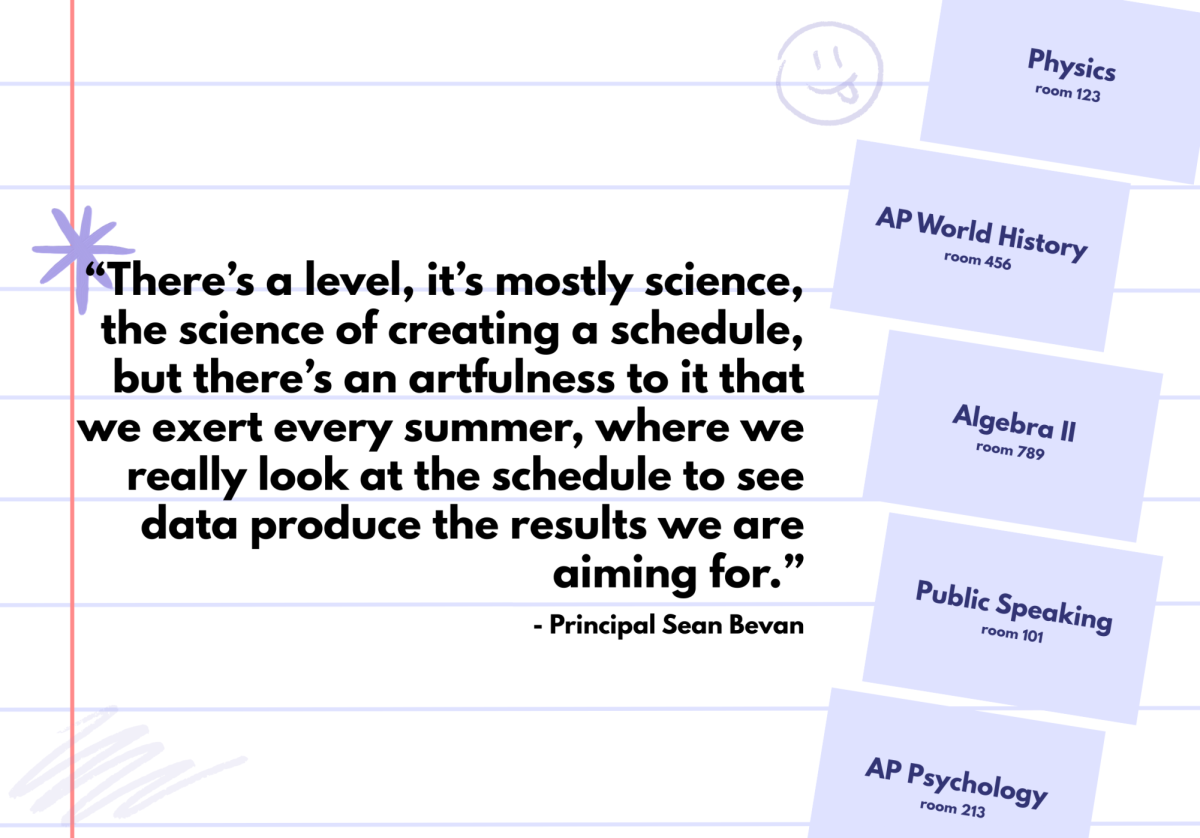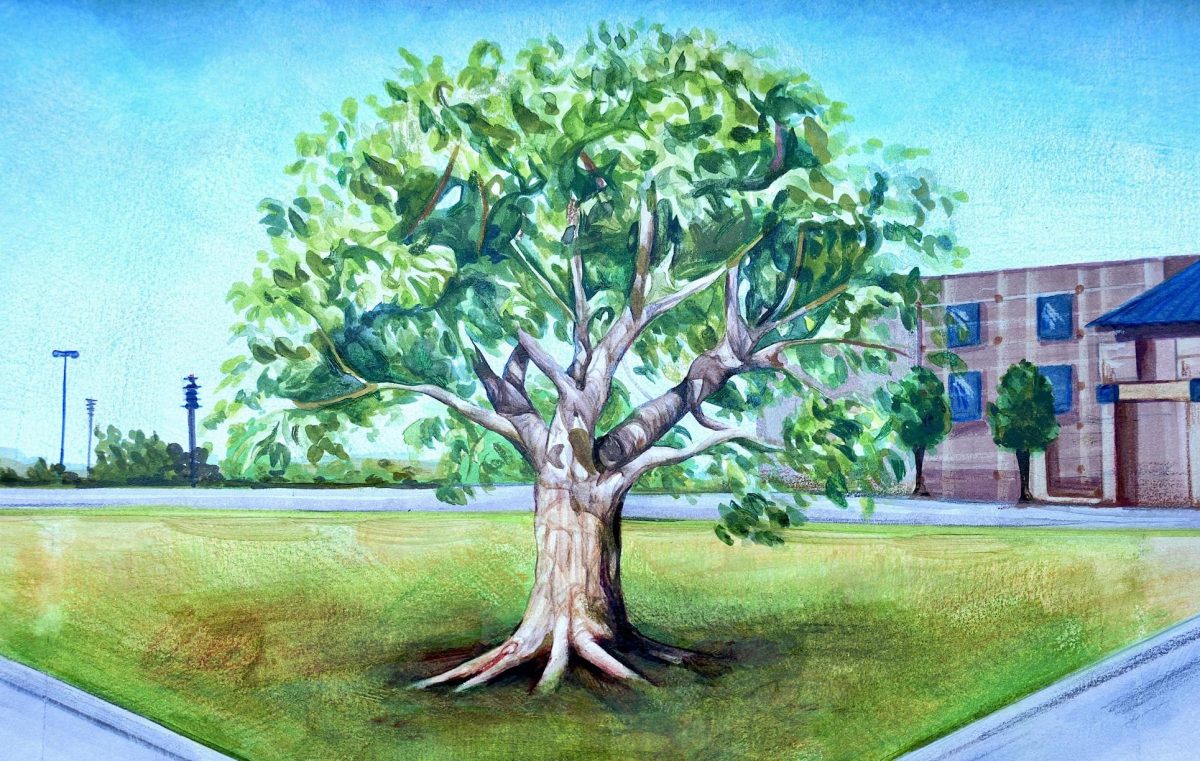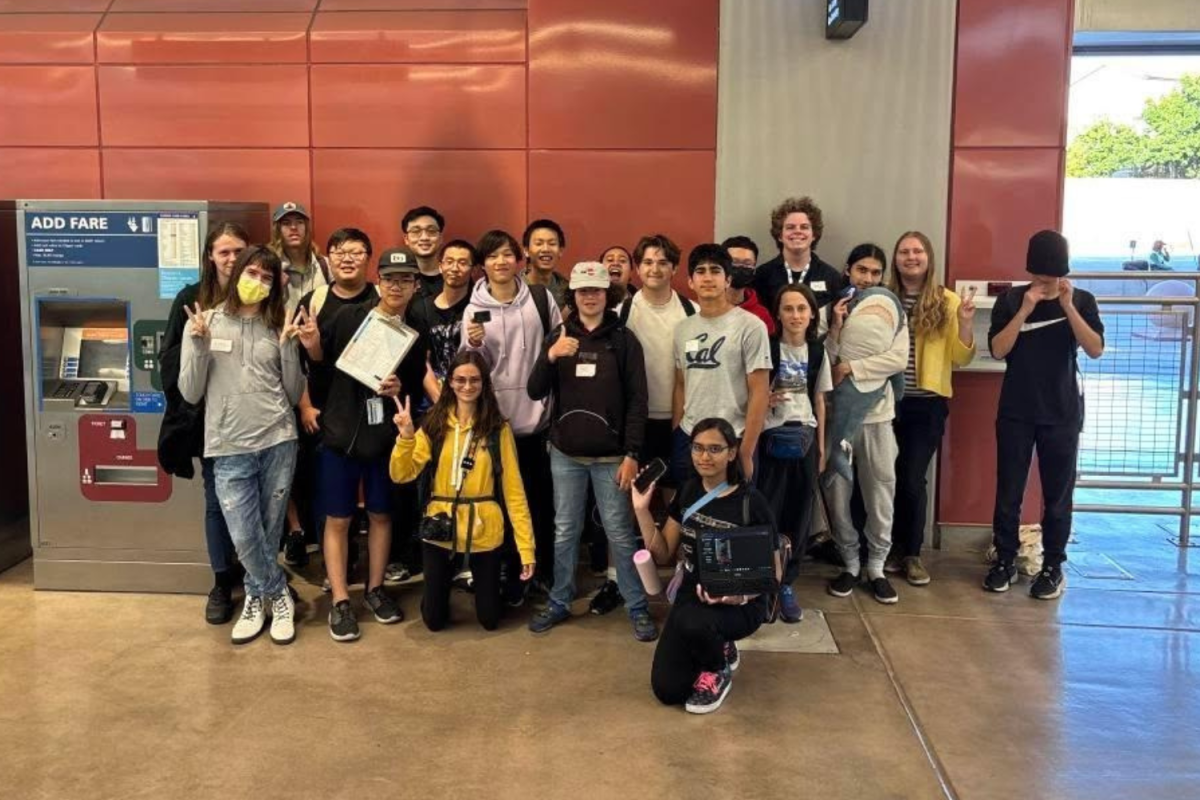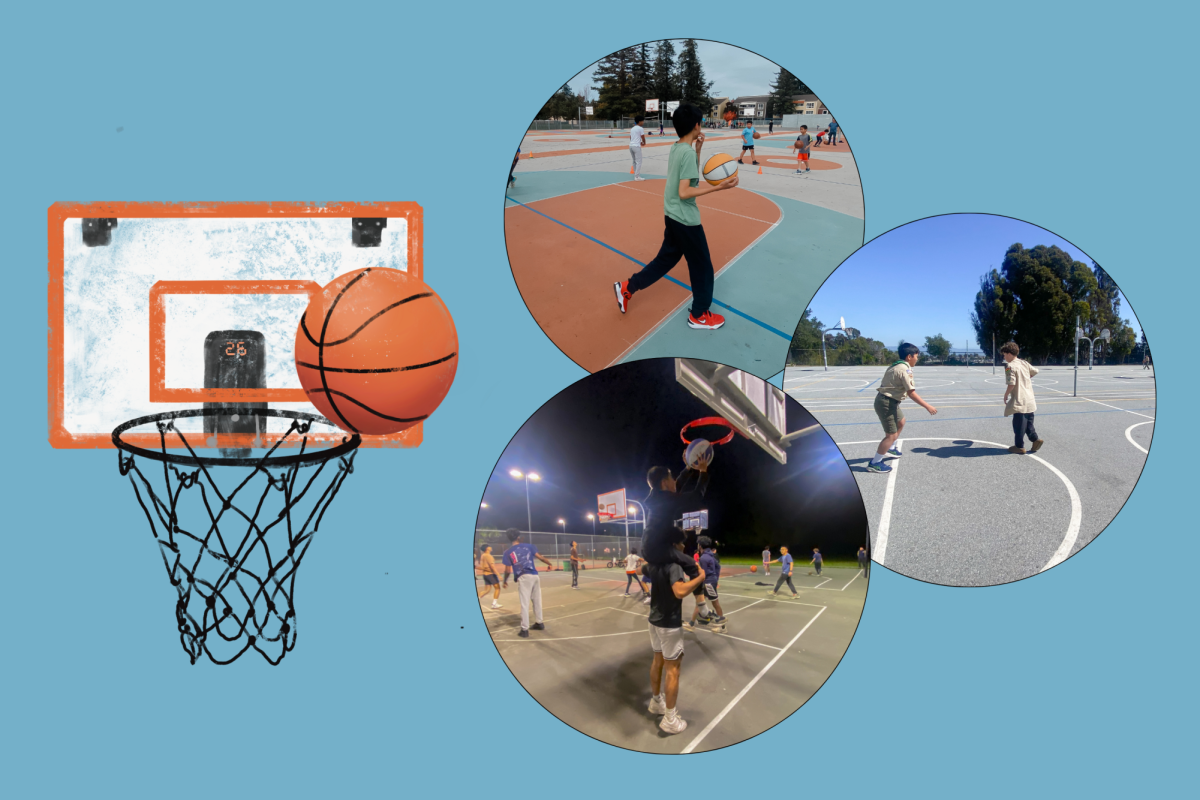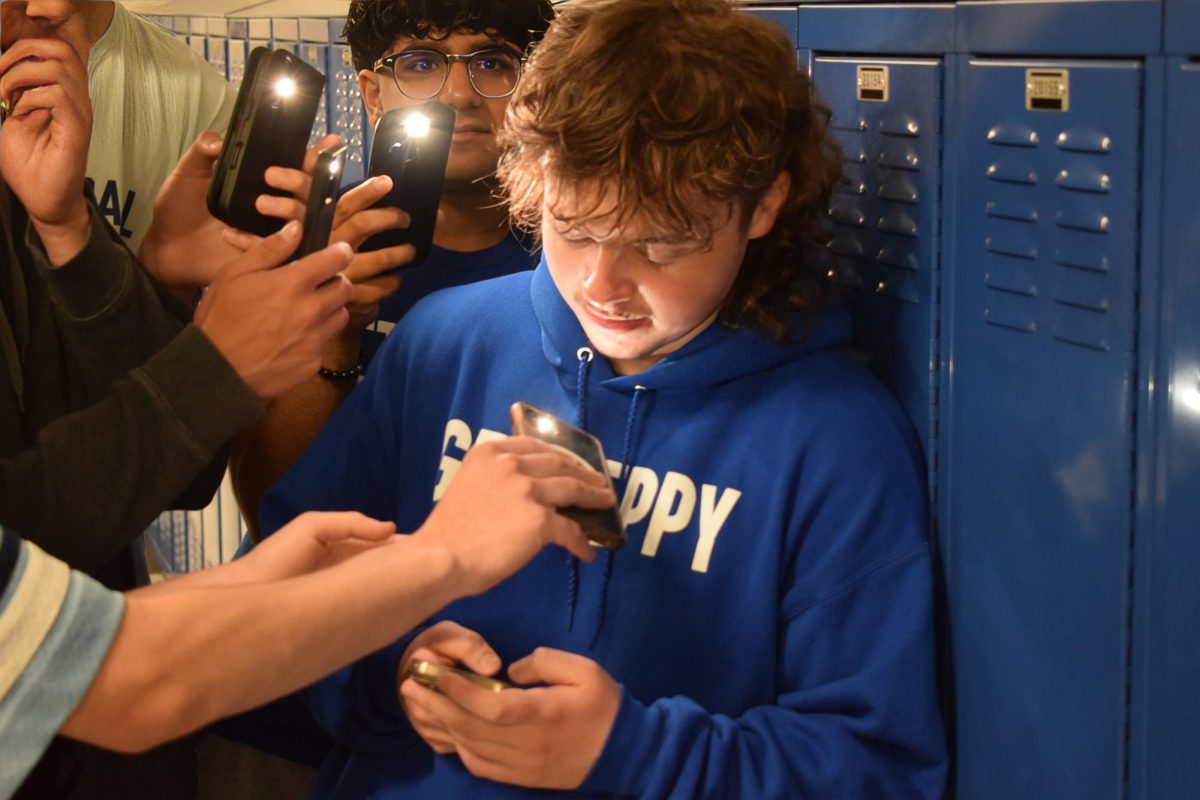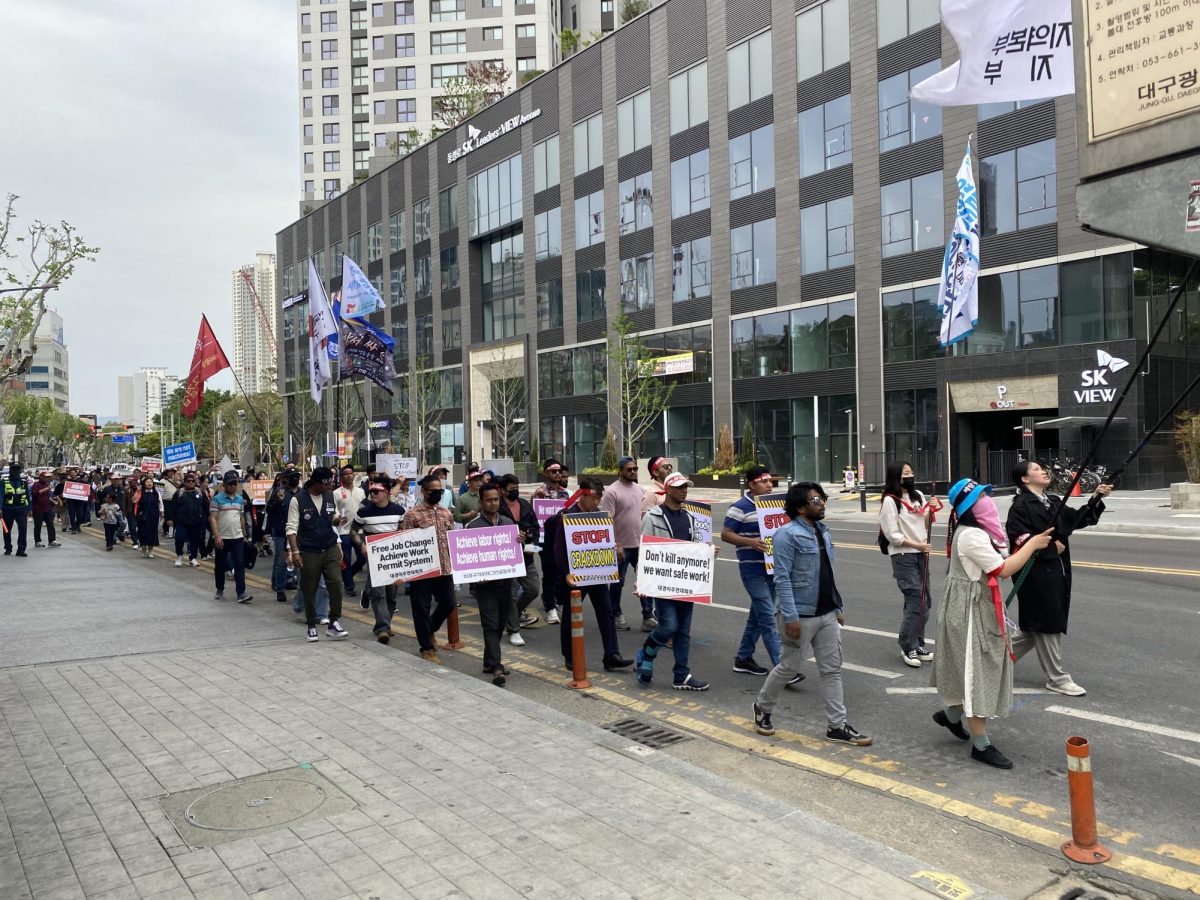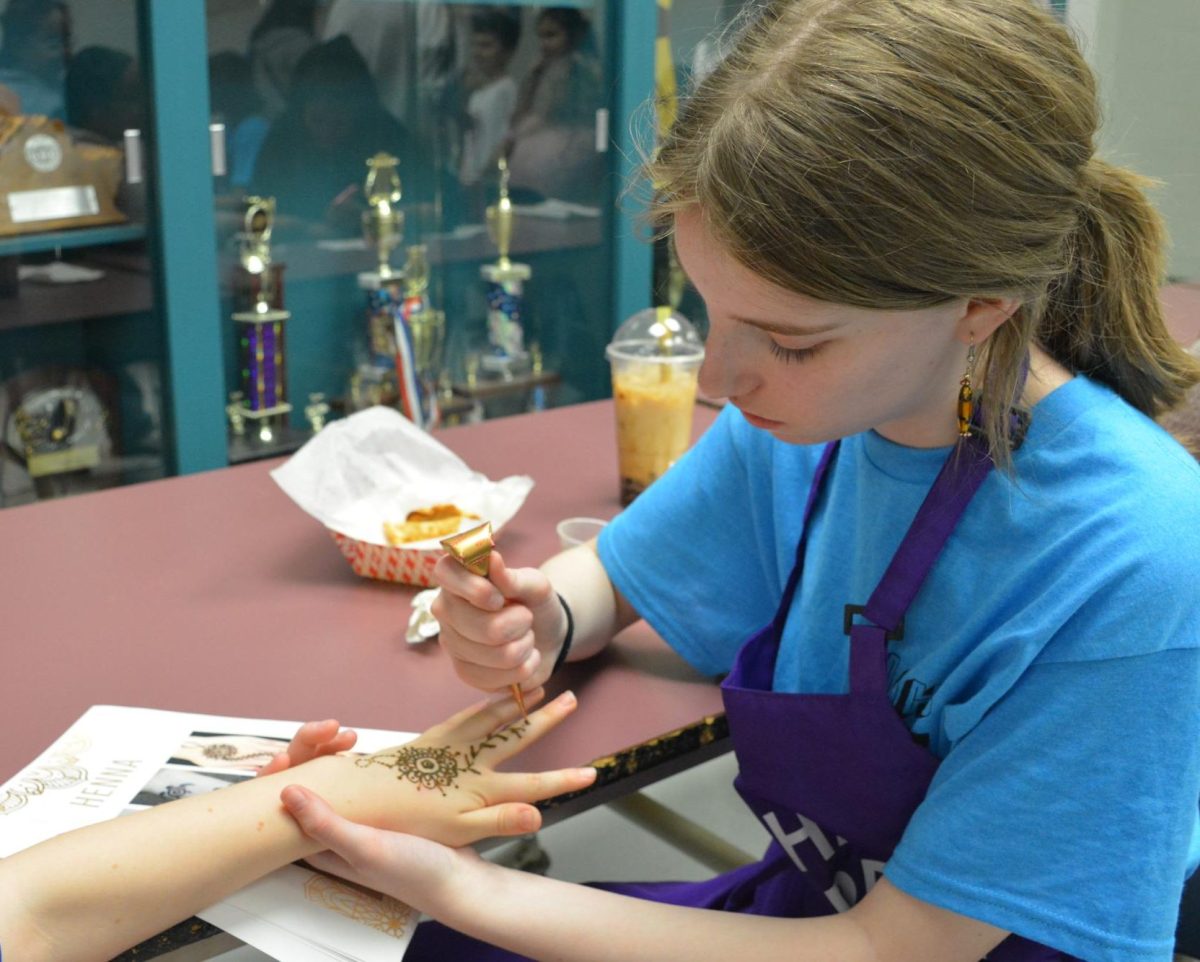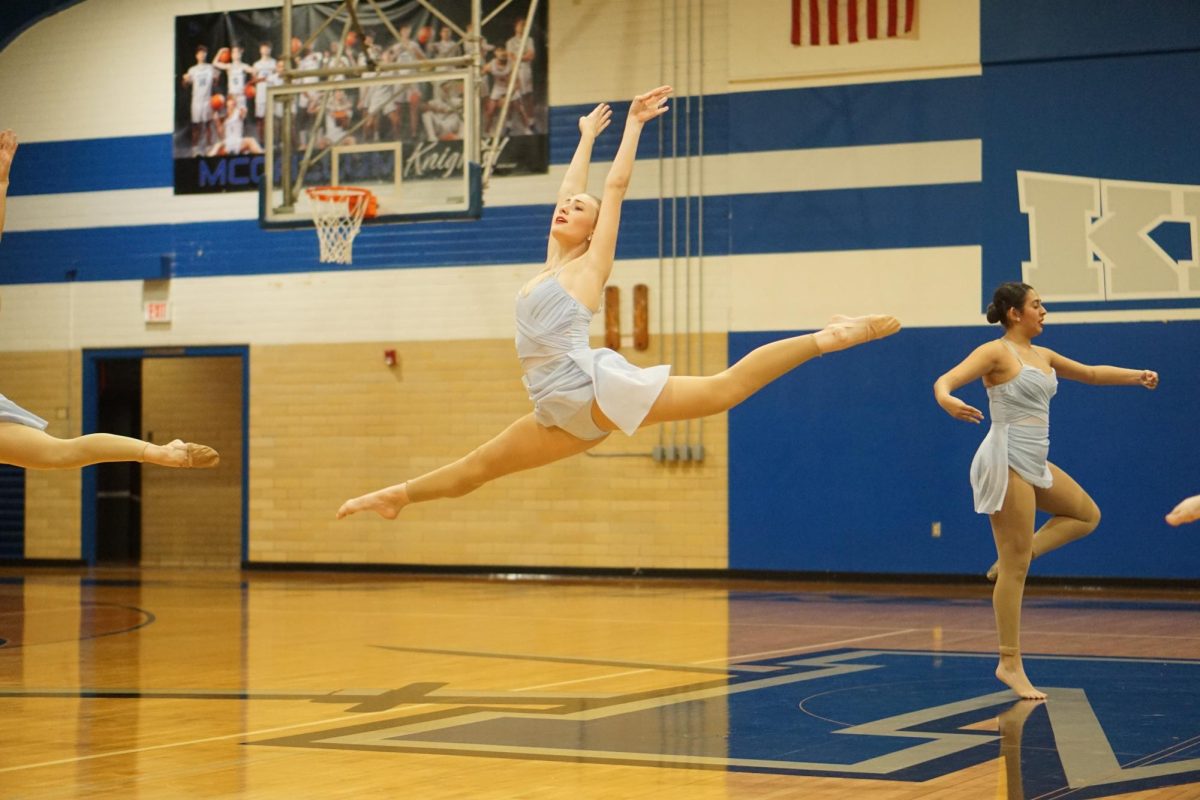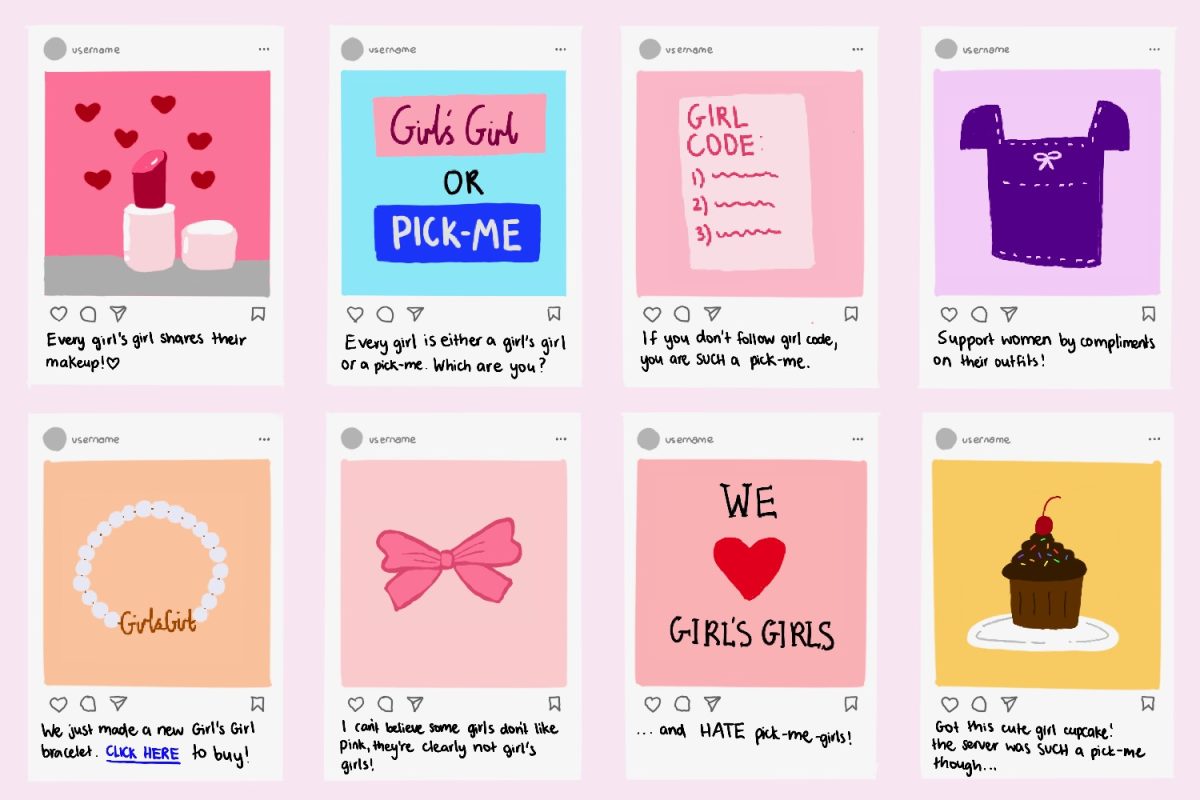For Leyla Bilha Tepekoylu (’28), emerging girl’s girl trends on social media serve as a refreshing break from the constant stream of negativity women experience online.
“As women, we should push each other up, especially because it’s so difficult to be taken seriously as a girl,” Tepekoylu said. “It’s great to be, like, a girl’s girl, supporting other women rather than putting them down or trying to compete with other women.”
According to Glamour magazine, the “girl’s girl” is a concept initially created online in response to the “pick-me-girl,” a term used to describe a girl who craves male validation and judges other women. Instead, the girl’s girl uplifts other women rather than seeing them as competition.
Director of Institutional and Community Equity Mirangela Buggs said the girl’s girl trend is an example of “an attempt to counter” the dynamics of online sexism, which also filters into the school environment.
“The U.K. is really concerned about sexism and misogyny and how it seeped into school cultures,” Buggs said. “There’s a charge for schools to start to address this, these disturbing ways that young girls are being treated and the attitudes that some young men have.”
Mahika Singh (’27) said, having dealt with sexism herself, she appreciates the trend’s intention of uplifting women.
“I definitely have experienced some negativity about being a woman,” Singh said. “It’s really nice to see people owning it and feeling happy about it and supporting each other.”
Tepekoylu said competition among women is exacerbated by the restricted opportunities for women in society.
“It’s already difficult for women to succeed in the world that we live in,” Tepekoylu said. “A lot of the time, there’s going to be girls putting other girls down because there’s such a limited amount of space for women to be successful.”
Nonetheless, Gabe Marchuk (’27) said the girl’s girl trend helps women build community and combat sexism.
“It encourages women to uplift those around them and show support,” Marchuk said. “It draws more attention to bigger women’s issues.”
However, Dasha Rahman (’25) said the concept of a girl’s girl is just another of many online trends using the prefix girl to diminish women. For example, the “girl math” trend is where women justify buying makeup or clothes with illogical mathematical reasoning, according to The New York Times.
“It’s just those trends that make supporting girls very gimmicky and shallow,” Rahman said. “It’s honestly, to me, really dangerous, because I think it really stops any meaningful conversation I get to have with girls about feminism.”
Moreover, Rahman said the girl’s girl trend feels performative, and while it may have good intentions, it still relies on women labeling each other.
“I like the idea in premise, and I think it is actually really important to overwhelmingly have the idea of supporting girls, just because specifically teenage girls are so heavily judged on so many aspects of themselves,” Rahman said. “The danger with those types of categories, even something as positive as calling a girl a girl’s girl, is that it still puts us into categories and limits us in a way.”
Likewise, Tepekoylu said while the trend initially seemed genuine, its focus has shifted to limiting women rather than empowering them.
“You don’t see guys calling themselves guy’s guys,” Tepekoylu said. “It boils down to putting girls in boxes and telling them that they not only have to seek validation from society around them to succeed, but they also have to seek validation from other women who are supposed to be a safe space.”
Moreover, Singh said many of the girl’s girl videos do not foster genuine support for women and instead shame those who don’t fit the criteria.
“For girls to grow their confidence and community, they need support, and the girl’s girl movement doesn’t always seem like it’s supporting people,” Singh said. “Some of the videos are a bit demeaning.”
Singh said although the girl’s girl trend doesn’t accurately represent all women, it is a step forward for online feminist movements.
“It is a great trend, but I don’t think it should be the end-game movement,” Singh said. “I want it to be more about real problems and real solutions for feminist issues.”
Buggs said a downside to online activism is its culture of short-form content instead of having meaningful discussions.
“People need the skills to actually talk to each other, actually listen, learn from each other and extend empathy and understanding,” Buggs said. “Some of the online culture of short vignette ways of engaging, whereas people actually need sustained conversation.”
Marchuk said the trend does feel inherently superficial; however, it still brings awareness to topics of sexism.
“Even if it is shallow to some extent and does avoid the hard conversations, it’s at least showing some attention to feminist topics, which is important,” Marchuk said.
Furthermore, Marchuk said having conversations about internalized sexism instead of simply labeling women as girl’s girls is important.
“Without discussion, we can’t actually understand the other side and its viewpoints,” Marchuk said. “We can’t be united if we don’t actually discuss and talk about topics and understand each other.”
Similarly, Buggs said work to uplift and empower women must exist outside of the internet.
“I know that young people do a lot of relationship building online and not necessarily in person, but there’s something really important about that human contact,” Buggs said. “There has to be something that happens in person for people to keep building that kind of connection and solidarity.”
Rahman said in order to move forward in the fight for gender equality, women must have direct conversations about sexism rather than using labels like girl’s girl to discuss it.
“As women, we can be critical, and we can think critically about how we want our feminism to look and how we want our support for each other to look,” Rahman said. “If we work to have more genuine understanding between women, between white women and women of color and between women of different social classes, we are hopefully going to find more realization about the inequality that we all exist in.”
This story was originally published on The Standard on April 9, 2025.



